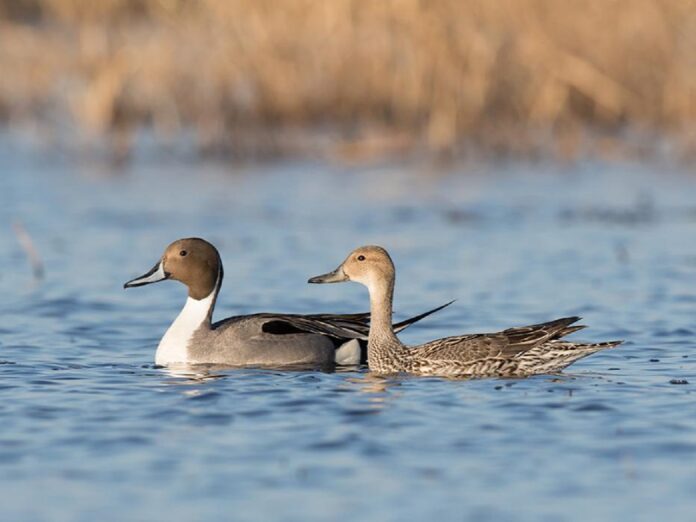The Prairie Pothole Region of North America is home to some 10 million ducks each year, but when they arrive there for breeding, they are met by a different environment. The pothole-filled native grasslands that ducks have frequented for thousands of years have undergone major change as a result of weather patterns and agricultural methods.
Climate change and land use change are two of the most significant threats to global biodiversity. To create anticipatory habitat protection and management plans, it is important to understand how species within a community react to simultaneous changes in climate and land use.
Some waterfowl have increased in number as a result of these changes, while others have decreased. In a new study, a research team led by Penn State found that nesting date plays a significant role in identifying winners and losers in the Prairie Pothole Region.
According to study leader Frances Buderman, assistant professor of quantitative wildlife ecology, waterfowl nest in a variety of habitats in the area, including idle grassland, crops, and overwater.
She said, “But when early nesting ducks arrive in the Prairie Pothole Region, many fields are covered in debris left from the previous fall’s harvest, mainly stubble from cereal grains, Although this habitat looks inviting, the eventual replanting of these fields, as opposed to leaving them fallow, makes the ducks more vulnerable to predators and often results in their nests being destroyed by agricultural activities such as tilling and planting.”
According to a new study, The time of nesting is an important factor in determining the impact of nesting in agriculture on demographic processes. The biggest negative demographic reactions to agricultural fields were observed in early nesting ducks.
Since 1955, the US Fish and Wildlife Service and the Canadian Wildlife Service have used the Waterfowl Breeding Population and Habitat Survey to track spring population abundances of North American waterfowl, providing one of the world’s largest datasets on vertebrate populations.
According to researchers, These ducks are adapted to nest in the mixed-grass prairie. As that natural habitat has been mostly replaced by farmland in the Prairie Pothole Region, the birds have become confused.
A researcher from Penn State said, “Last year’s stubble looks good to them from the air, but in reality, it does not offer the same advantages and protections that the grass does, Over time, on a large scale, this association with cropland can lead to lower reproductive success and declining population numbers for early nesting ducks that breed in the region.”
Buderman’s research group in the College of Agricultural Sciences previously focused on northern pintail ducks, a species that has been declining since the 1980s. They characterized northern pintails’ inclination to nest in agricultural fields as an “ecological trap” since the number of pintails the next year, a consequence of demographic processes such as reproduction and survival, decreased with increased farmland use.
Buderman said, “This isn’t to say that all early nesting waterfowl are going to struggle. Early nesting ducks that don’t nest in cropland, and diving ducks, such as canvasbacks, nest over water and are not likely to be impacted by this trap. Climate change, which may allow farmers to till and plant earlier in the spring, could make matters worse. An earlier spring warm-up could also lead to a mismatch between nesting activities and food availability.”
The researchers focused on nine duck species that have historically been used in the Prairie Pothole Region and used data from the Waterfowl Breeding Population and Habitat Survey from 1958 to 2011 to draw their conclusions. American wigeon, blue-winged teal, canvasback, gadwall, mallard, northern pintail, northern shoveler, redhead, and ruddy duck are a few examples of the bird species.
The researchers calculated species-specific responses to temperature and land-use variables in the region, which has changed from mixed-grass prairie to cereal grain, oil crop fields, corn, wheat, sunflower, and soybean fields.
This study examined how changes in temperature and land-use variables affected habitat selection and population dynamics in nine species, analyzing species-specific responses to environmental change.
The researchers were able to see patterns of species-level responses and determine where species chose characteristics that were damaging to their population dynamics.
The researchers discovered that northern pintail, American wigeon, and blue-winged teal all displayed exciting responses to habitat changes, although not always in the same way.
She said, “Each species we studied reacted a bit differently to changes in climate and land use. We observed species-level differences in the demographic and habitat-selection responses to climate and land-use change, which would complicate community-level habitat management. Our work highlights the importance of multi-species monitoring and community-level analysis, even among closely related species.”
The study was funded by the National Institute of Food and Agriculture of the United States Department of Agriculture, Delta Waterfowl, and the California Department of Water Resources.
Journal Reference:
- Buderman, F. E., Devries,etal. A life-history spectrum of population responses to simultaneous change in climate and land use. Journal of Animal Ecology. DOI: 10.1111/1365-2656.13919
